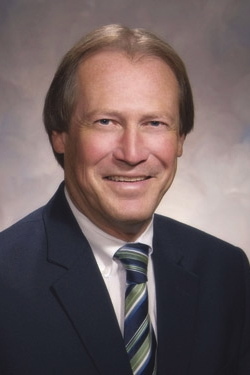It has become an all-too-common scenario in Idaho.
In the face of flat or declining state funding, school districts have gone to local property taxpayers to fill in the gaps by passing supplemental school levies.
But this year, in the Boise School District, the opposite scenario is unfolding. Thanks to a boost in state funding, the district is rolling back a property tax levy earmarked to pay for smaller class sizes.
In March 2012, Boise voters approved a five-year supplemental levy designed to keep teachers in the classroom. Without the levy, proponents argued, the district would have to cut some 230 teaching positions. The levy passed easily, with a 71 percent majority.

Voters gave the Boise district the go-ahead to levy up to $14 million a year. The district has never levied the full amount; “it was a promise we made to the voters,” Superintendent Don Coberly said Tuesday. In 2012-13 and 2013-14, the district collected $12 million a year. And in the 2014-15 district budget, approved Monday night, the district will collect $6.5 million, less than half of the authorized levy.
To be sure, several factors are providing Boise school officials with some breathing room.
One ingredient is a rebounding local economy. As a “charter” school district, formed before Idaho’s statehood, the Boise district retains unique property tax-collecting authority — over and above any voter-approved supplemental levy. Growth in the district means the schools have been able to collect more money from the “charter” levy, Coberly said.
But a considerable factor is the state’s K-12 budget. The 5.1 percent increase is the most robust spending boost since 2007. One cornerstone of the budget was a $35 million increase in “operational funding,” the versatile state support that districts can use for anything from staffing and health insurance to utilities and transportation.
Boise’s cut of the operational funding increase comes to about $3 million. Much of the money is going to staffing and salaries, said Nancy Landon, the district’s budget and finance administrator. Some of the money will go toward utilities; the district absorbed a 15 percent increase in electric rates last year.
Boise is among the vast majority of districts relying on supplemental levies: 94 of Idaho’s 115 districts had such levies on the books in 2013-14. But passing and imposing a local school levy is by its nature a hit-or-miss proposition. While Boise has been able to use increased state funding to reduce its levy, other districts are struggling with the effects of failed levies. For instance, voters in the Bruneau-Grand View School District have rejected levies twice in 2014; the district now plans to close two elementary schools and convert Rimrock Junior-Senior High School into a K-12 facility serving more than 300 students.
The problem for all districts is one of stability, said A.J. Balukoff, an 18-year Boise school trustee and the Democrats’ gubernatorial nominee. Most supplemental levies are short-term, running one or two years, and this inhibits long-range local planning.
In Boise, and in other districts, short- and long-range planning revolves around another unpredictable variable: enrollment. Boise’s enrollment peaked at 26,913 in the fall of 1997, but steadily dropped in the early 2000s as families left the district for lower-cost housing in neighboring districts. Enrollment bottomed out at 25,543 in fall 2008.
Boise’s enrollment is rebounding, fueled by growth from the Harris Ranch planned community in East Boise to apartment complexes and neighborhoods in West Boise and Northwest Boise. According to February figures, Boise’s enrollment was 25,978.
Boise administrators aren’t expecting a big enrollment increase in 2014-15 — perhaps 100 or so students, based on projections. However, they were taken aback last fall by an enrollment increase, when all the indicators pointed to flat enrollment.
But any enrollment increase brings Boise administrators back to where they were when they proposed the 2012 levy — looking to hold down class sizes. An increase of 600 or so students is roughly equivalent to an entire grade school, with staffing requirements to match.
Read more: Boise district officials talk dollars with legislative budget-writers.
